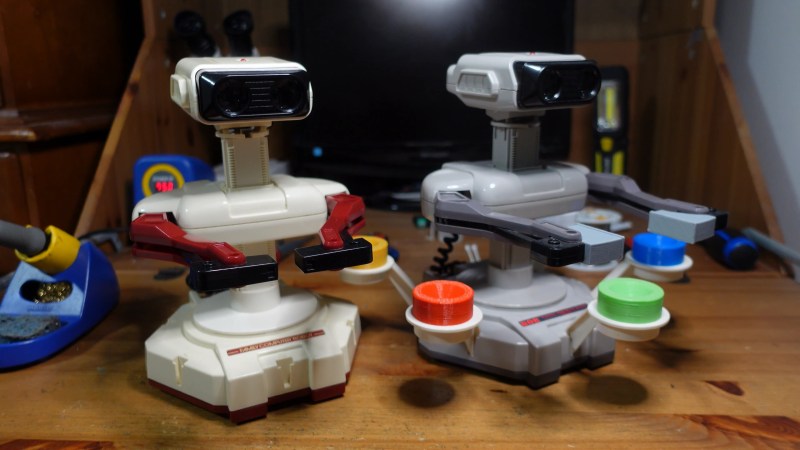
Too busy playing video games to have a social life? No worries. In 1985, Nintendo introduced R.O.B. — otherwise known as the Robotic Operating Buddy. It was made to play Nintendo with you. In Japan, apparently, it was the Family Computer Robot. We suppose ROB isn’t a very Japanese name. The robot was in response to the video game market crash of 1983 and was meant to keep the new Nintendo Entertainment System (NES) from being classified as a video game, which would have been a death sentence at the time of its release.
Since you might not have heard of R.O.B., you can probably guess it didn’t work out very well. In fact, the whole thing tanked in two years and resulted in only two games.
Background
After video game sales tanked in 1983, many retailers decided that video games were just a fad and that the fad was over. However, toy sales remained strong, so Nintendo pivoted from its plan to produce, essentially, a home video arcade game. This led to the famous NES. However, Nintendo also had access to the Family Computer Robot and decided to package it as part of the NES system, as well.
The Robot
The robot itself, as you might imagine, was pretty simple. It couldn’t move very fast, and it had crude vision that could read certain patterns off the screen. The toy motors inside were noisy, as you can see — and hear — in the video below.
In fact, the robot’s vision was essentially the same as the “Zapper” which was the gun included with the NES. You can see both in the ad below (the NES ad is at 2:30).
Like many light pen devices, the Zapper, and thus R.O.B. only worked with a CRT-based TV. Of course, back then, that was pretty much your only option, so that was no problem at the time. If you want to know more about the scheme, you can read the patent. Reflected light and TV brightness could cause problems. The robot had a sticky filter you could put over its eyes, if needed, to cut down on a particularly bright TV.
It isn’t easy to tell from the videos, but the robot is a little over 9 inches tall, and about 6 inches wide. It weighed less than a pound and a half. The arms could rotate through 300 degrees, stopping at five different points. It could also move the arms a little less than 3 inches vertically, with six different stopping points. The grippers could open to 2.75 inches.
Games
There were only two games officially produced, Gyromite and Stack-Up. The first game came with claws for the robot that could engage with the included spinning tops. The robot’s manipulation of the spinning tops allowed the on-screen player to navigate past obstacles to collect dynamite before it explodes.
The Stack-Up game had five trays and five colored disks, along with more custom claws. There were several variations of the game, but, in general, you had to make the robot stack the disks to match a pattern on the screen.
Unofficially, there was a 2014 game released by an indy developer that makes R.O.B. dance to Christmas music. Other than that, as far as we know, that’s all you can do with it unless you hack something together.
Trojan Horse
R.O.B. was really just a gimmick. It convinced stores that this wasn’t a video game, but a toy. It also excited kids. A market research firm determined that of 200 people who bought the first NES systems, a majority did so because of the robot.
But after a bit, most of the games didn’t use the robot and there were no updates to it. But it didn’t matter. Kids were happy to play Super Mario Bros, The Legend of Zelda, and other games while R.O.B. sat, unused, in the closet. R.O.B. does show up on screen in several Nintendo games. You can even unlock him as a character Super Smash Brothers.
Teardown
As you might expect, any of these that are left today probably need some work. [Long Island Retro Gaming] has a teardown and repair video if you want to see what makes all that noise when it moves.
Farewell R.O.B
You could say R.O.B. was a failure. But, really, it was very successful. It kept the NES from being tagged as a video game and failing in the marketplace. Once the system was in your home, it didn’t matter that you didn’t use the robot. Not bad for a light gun, a few motors, and some plastic gears.
Of course, these are just begging to be hacked — not to mention begging for better motors. Or cellphone control via goggles. Or let [Joshua Vasquez] show you how to build a new one.
0 Commentaires